Frozen: Sorting F-150 Lightning cold-weather fact from fiction
Just before 6:30 a.m. on a February morning, my phone lit up with a notification: The Ford F-150 Lighting in my driveway had stopped charging.
“That’s not good,” I said to my wife Karen, noting that the truck was plugged in and not yet fully charged.
By the way, it was about 20 degrees below zero Fahrenheit.
I’ll get back to what happened with the charger on a cold morning. But if the video headlines screaming in all caps on the Internet are to be believed, electric trucks don’t work in the cold at all because they lose all their range. After a week of extreme cold-weather testing of the Ford F-150 Lightning I’m here to tell you that’s some grade-A clickbait.
I froze my tuchas off during that week of subzero weather in Minnesota with a Ford F-150 Lightning to separate fact from fiction. I never ran out of juice, and I don’t even own a Level 2 home charger.
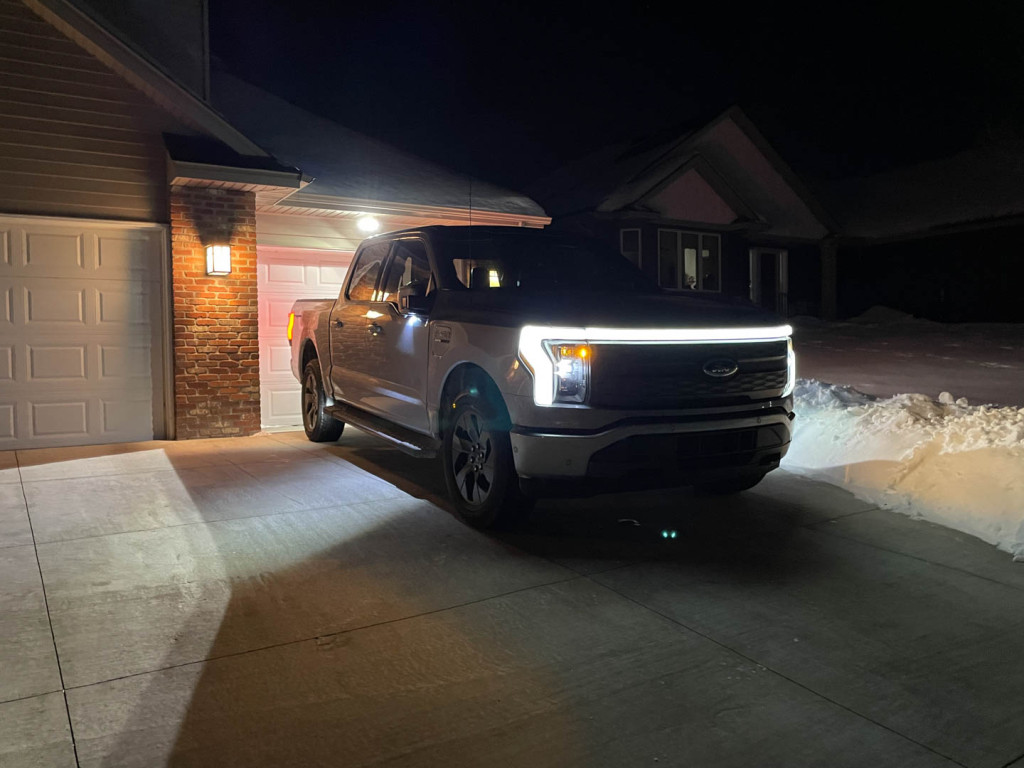
2023 Ford F-150 Lightning
What I did
Everything wrong. On purpose.
Most EV owners will have a Level 2 charger at their home and, when it’s this cold outside, precondition the vehicle (the cabin, and perhaps the battery) while it’s still plugged in. I did neither of those things—even though the FordPass app makes those things easy to figure out.
Parking an EV inside a garage would help too. But 35% of America doesn’t own a single family home, many Americans don’t have a garage, and those who do might not even be able to fit the 231.7-inch long F-150 Lightning inside it.
For them, I looked at three scenarios:
1) I let the truck sit outside in ambient temperatures ranging from -5 to -22 degrees Fahrenheit for 12.5 hours straight unplugged. This was to cold-soak the battery and every other component in the vehicle and see how it affects the Lightning.
2) Another night with the exact same conditions I plugged the Lightning into a regular 120-volt outlet with the standard charging cord that comes with every F-150 Lightning for 12.5 hours. This scenario trickle-charged the truck and replicated what might happen should someone find themselves parking at a friend’s house on a road trip (or at work).
3) With a nearly empty battery I fast-charged the truck at an Electrify America station in the cold, which itself proved to be an experience.
4) With a warmer battery I charged the truck on public L2 chargers and a slower, less powerful, L3 charger.
Here’s what I learned.
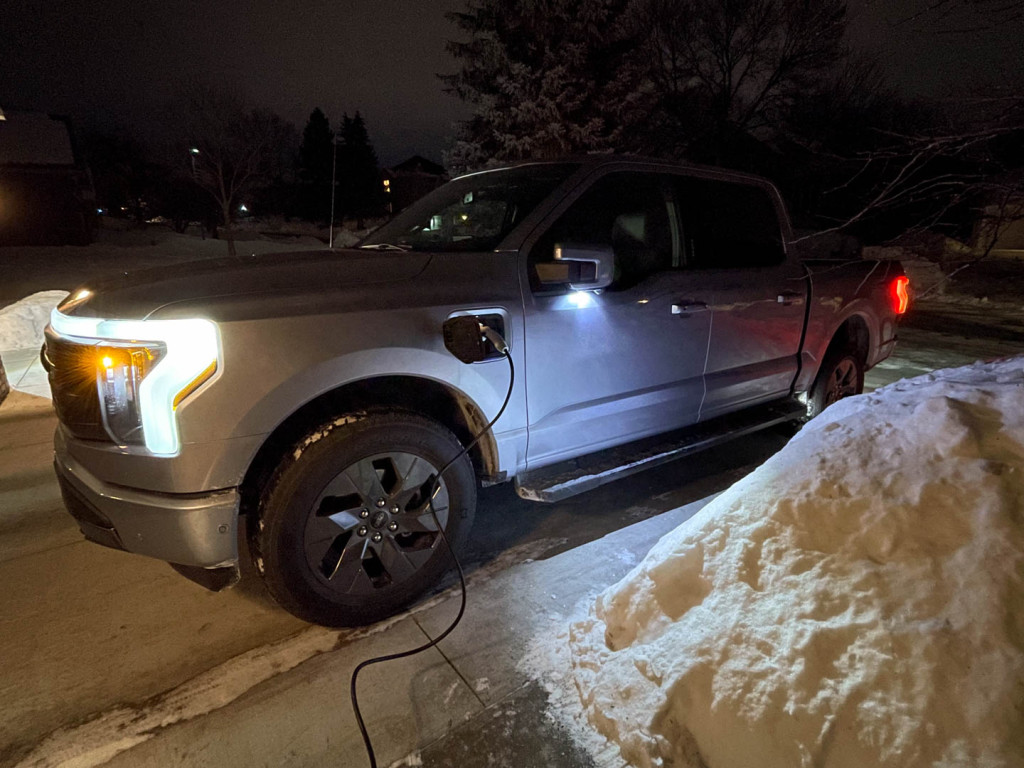
2023 Ford F-150 Lightning
EV range and efficiency go down in the cold
In fair to warm temperatures our team has seen the Lightning average anywhere from 2.1 to 2.6 mile per kwh. That’s a big range with lots of variables, just as with the fuel economy of a gas-powered vehicle.
The best I saw in this week of cold-weather testing with the Lightning, in a 44-mile highway run at 16 degrees, was a 1.8 mile/kwh average. And over the course of the whole 358 miles of mixed driving, the Lightning averaged 1.5 mile/kwh—amounting to about 200 miles of range from the 131-kwh Extended Range Pack, rated for 320 miles.
So overall, the Lightning lost about a third of its efficiency—and range—in the cold.
This kind of efficiency and range loss isn’t unheard of for gasoline vehicles either, in such cold weather. My wife’s Jeep Grand Cherokee with a V-8 engine sees a one-third drop in fuel efficiency (from about 16 mpg to 12 mpg) in the same conditions. Friends with turbo-6 F-150s report about the same gain in thirst.

2023 Ford F-150 Lightning
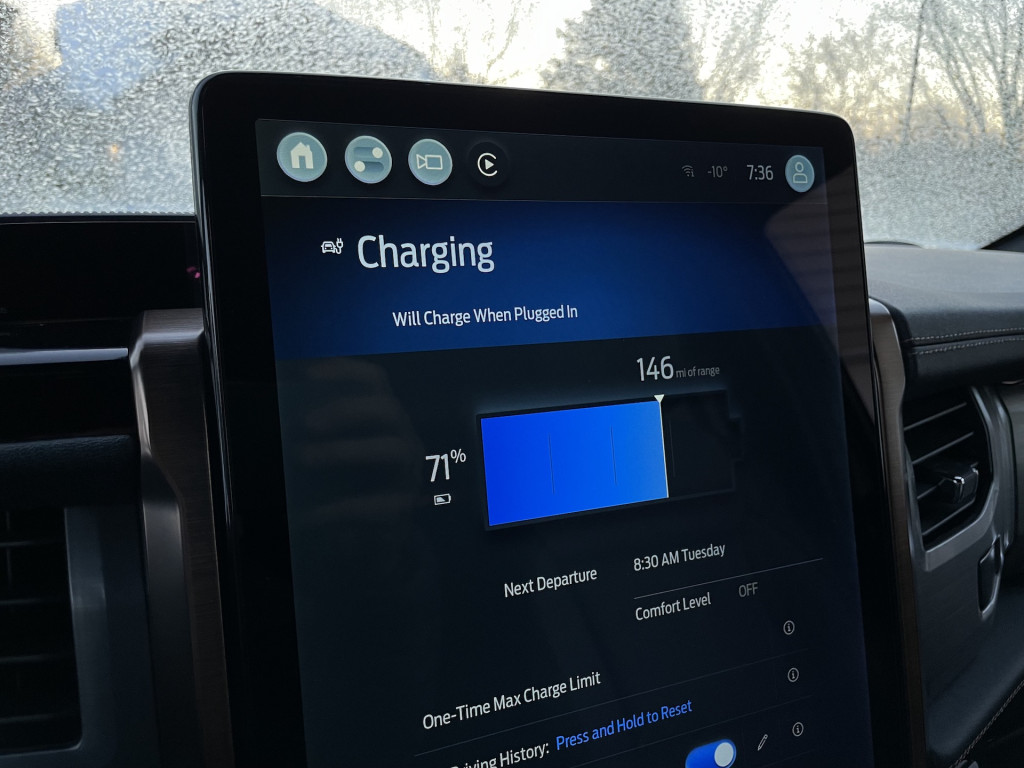
2023 Ford F-150 Lightning
While some EVs are experiencing issues retaining energy in the cold, the F-150 Lightning didn’t indicate it lost any energy during a 12-hour cold soak despite the estimated range dropping 38 miles.
The F-150 Lightning doesn’t have a heat pump, which might have helped it in the cold. A heat pump acts like an air conditioning system in reverse to move heat energy to the cabin rather than create it. It can increase cold-weather range by up to 20%. That can be the difference between getting to a charger or not on a road trip.
Gitanjli McRoy, chief engineer of Ford’s EV energy management systems for the F-150 Lightning, told Green Car Reports the truck doesn’t have a heat pump because Ford balanced what was technically ready, could be optimized, and deliver the best value while getting the truck developed. The way the plumbing is done offers the Lightning opportunities to heat-share where it can, according to McRoy. The engineer wouldn’t comment on the Lightning’s roadmap for such a feature but noted the team is continuing to improve the truck.
Another observation that carries over from gasoline vehicles is that the more extreme the conditions get, the more wildly the estimated range swings—and the less you should fixate on what it might be at any moment. It’s the result of an algorithm resulting in an educated guess of how far the remaining energy will take the truck.
For instance: In the span of 30 minutes while sitting in the driveway with the truck turned off, the Ford iOS app told me with a full charge the Lightning’s range would be just 153 miles and two minutes later claimed 189 miles of range.
In short, relying wholly on the estimated range is unrealistic, but it makes for great YouTube videos. Just as would happen with a gas-powered car that encountered a handful of 0-60 mph runs, the range remaining number is easily influenced and not completely accurate. As Senior Editor Bengt Halvorson so casually put it: “Like in a gas car, you should just follow the fuel gauge.”
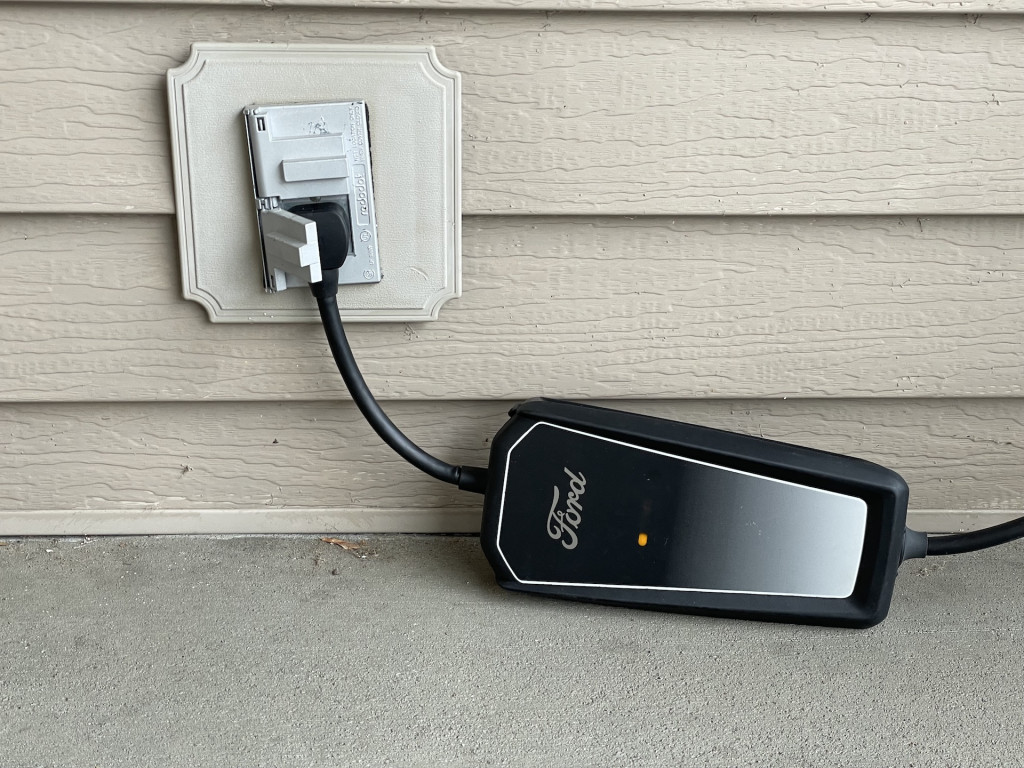
2023 Ford F-150 Lightning
Charging: Can you freeze an EV charger?
Trickle charging off the 120-volt outlet overnight on average adds just over 1 kwh per hour, which translates to 1 to 2 miles of range per hour in the conditions I experienced. Importantly, it took some of the stress off the battery to keep itself warm in the cold.
But that’s when Ford’s 32-amp home charger quit on me mid-charge. A quick check of the owners manual online informed me that the blinking amber light meant the charger had encountered a fault; unplugging to reset didn’t solve it either.
The answer essentially was, yes, I did freeze the charger. It’s only rated and certified to -22 degrees Fahrenheit. A few hours warming up inside my house and then the charger was as good as new.
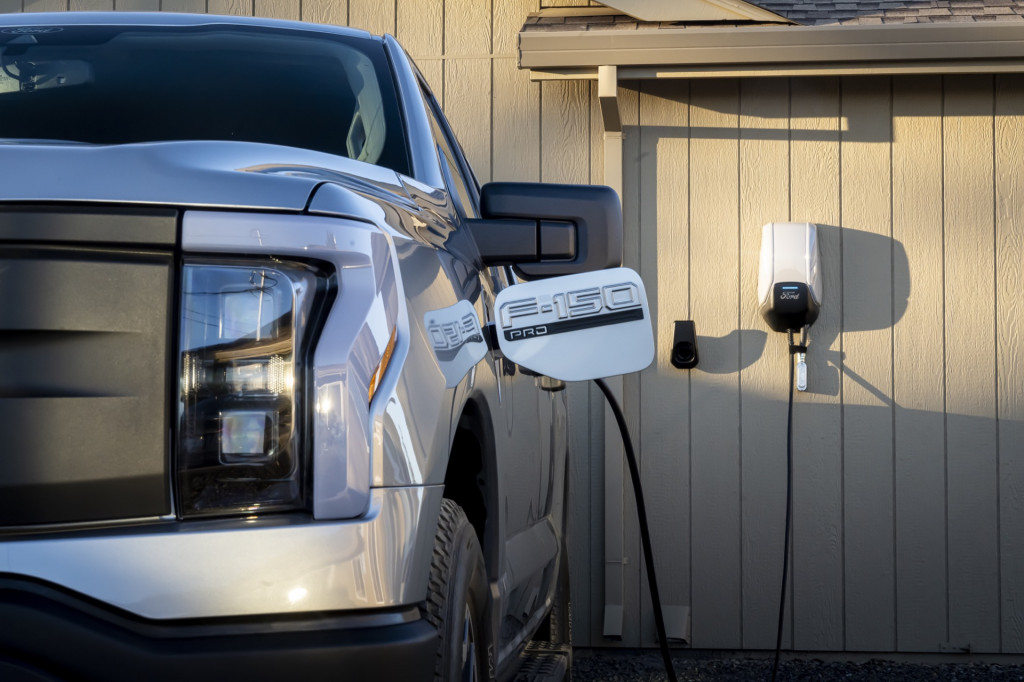
2022 Ford F-150 Lightning
Ford said the more powerful 80-amp charger that comes standard with the Extended Range Lightning, which my Lariat tester was optioned with the larger battery pack, is certified to -40 F. An owner would theoretically have this charger installed, either in their garage or outside at their own expense. Standard Range Lightning owners will have to pony up $1,310 to buy this charger if they want it.
As a reference point Rivian rates both its home and portable chargers to -22 F, and GMC said the available Hummer EV home wall charger is also rated to -22 F. The standard portable charger that comes with the Hummer EV is rated to -40 F, though Tim Esterdahl of Pickup Truck + SUV Talk froze it in a similar situation as me (though at 240V) when it was (+)2 F outside.
I was unable to get any definitive gauge of how the cold was affecting the Lightning at an Electrify America fast-charging station. One 350-kw charger was offline, one refused to respond or recognize the truck, and the line of 150-kw chargers all displayed a message (which was displayed two weeks prior when charging an Audi Q4 E-Tron) stating the maximum power of the chargers had been temporarily reduced in order to improve service and perform an update. The FordPass Plug and Charge feature worked as billed though.
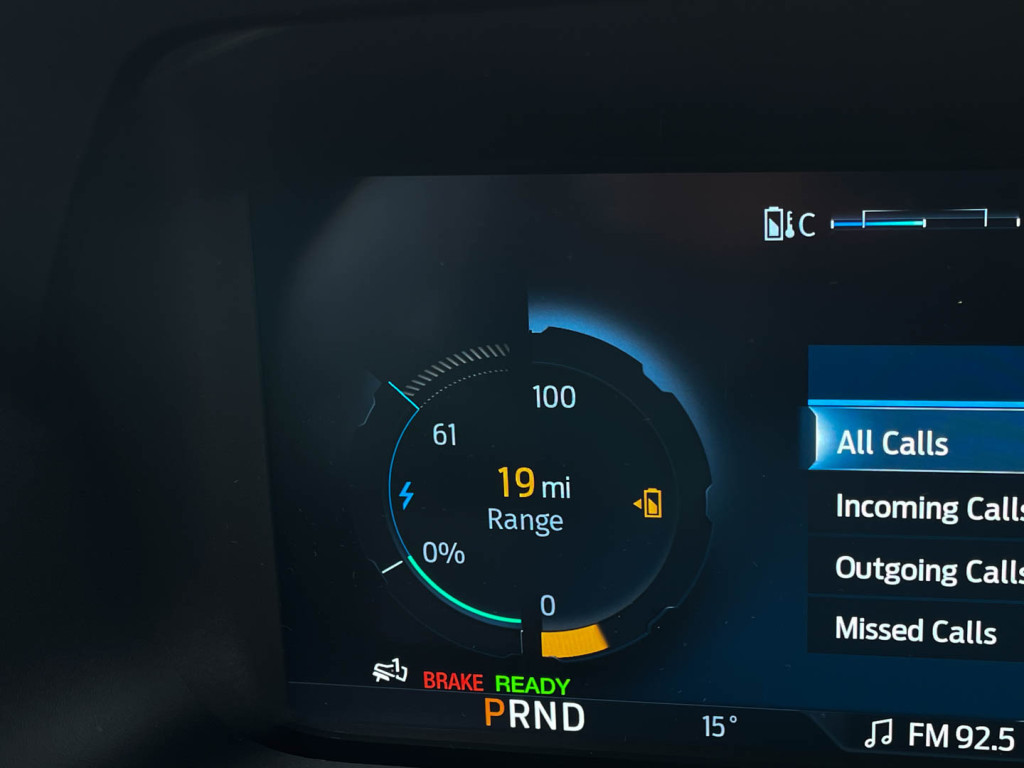
2023 Ford F-150 Lightning
Does cold reduce EVs’ power output?
Starting up a gas-powered truck after sitting outside in sub-zero temperatures is extremely hard on the engine. The oil is like sludge; the starter strains from a lethargic 12-volt battery; the engine eventually fires, and then runs rich as it comes to life. And it would be downright irresponsible to tap into peak power in the first few minutes after starting cold in weather like this.
No matter how cold, the Lightning, and other EVs, have none of that. Almost.
Unlike every other electric car the Lightning displays available power output on the left side of the gauge cluster—and that gauge indicated power output was reduced nearly the entire week I spent with it. The reason? The battery pack was too cold most of the time to deliver full power to the electric motors.
Since the F-150 Lightning is a truck, and tasks like towing depend on being able to tap into full power, Ford is helpful in including this gauge, and I saw power pulled back to as little as 61% of full, though it mostly averaged between 68% and 78% unless I warmed the pack fully by hooking to fast chargers.
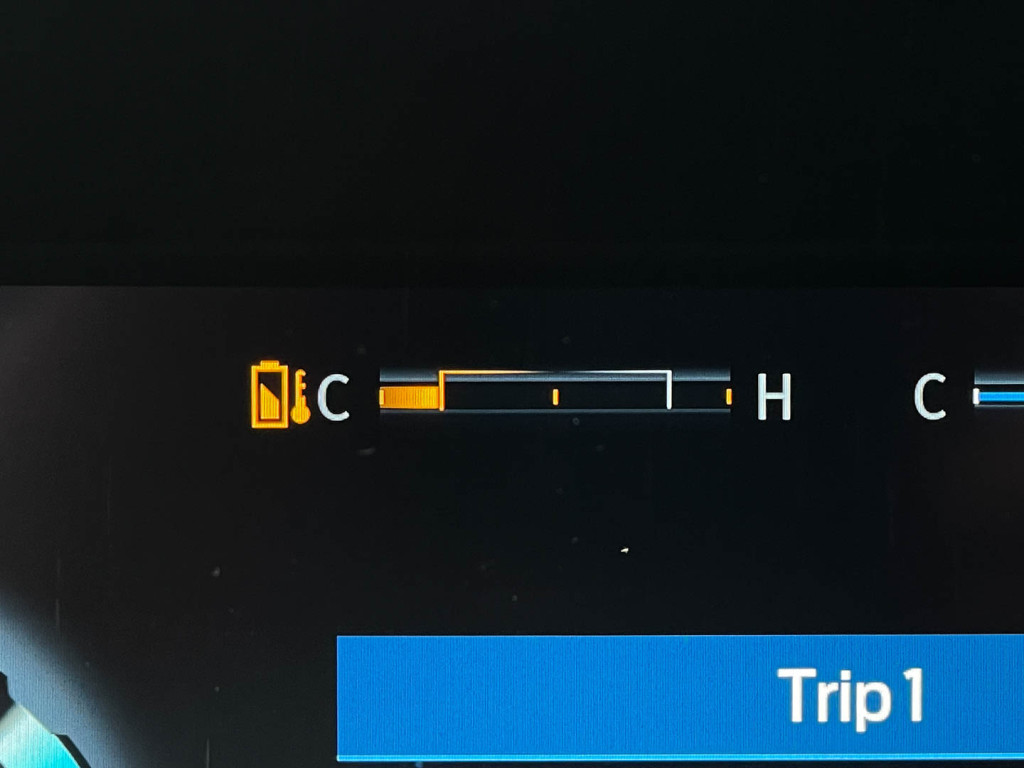
2023 Ford F-150 Lightning
Throughout the week the battery temperature gauge indicated when the pack was cold, but only once did I get the pack so cold the gauge turned orange; it felt like an achievement.
Ford verified that battery temperature and state of charge both play a factor in power output. In the middle of summer with a warm pack and the battery at 13% power output would be limited as well, according to McRoy. The battery temperature bars that owners see in the upper left of the digital gauge cluster is a direct measurement via a sensor rather than an inferred reading via cell monitoring.
While Standard Range Lightnings make do with just 452 hp and 580 lb-ft of torque, my Extended Range Lightning with the larger 131-kwh battery pack had 580 hp and 775 lb-ft of torque. With the big battery Ford said the Lightning rips from 0 to 60 mph in less than 4.0 seconds. Even with only 60% power output, or 75%, the Lightning isn’t slow. Unless a driver is doing stoplight sprints, the gauge is the only reason they’d be aware that power output is being limited.
The Rivian R1T will simply show a snowflake symbol in the gauge cluster should the powertrain be too cold to provide full power, and the GMC Hummer EV doesn’t display anything or make the driver aware that power output is limited. Other EVs don’t either outside of some displaying a symbol like Rivian.
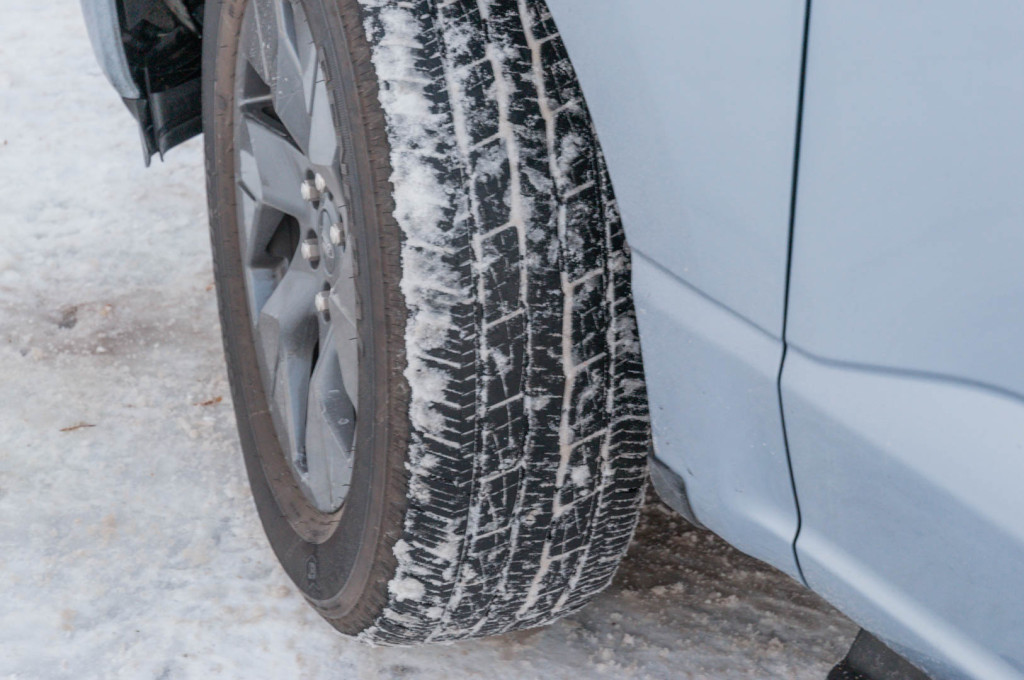
2023 Ford F-150 Lightning
The Lightning rode on General Grabber HTS all-season rubber. In the cold these tires are not great. On dry, cold pavement all four tires can chirp from a start. On slick, snow-covered pavement they slip and slide quickly. A real set of winter tires—and a Snow or Slippery Conditions drive mode, which other Fords like the F-150s have—would do wonders for the Lightning (as they do for any vehicle) in the cold.
Via an over-the-air update Rivian added a Snow Mode to its R1T and R1S that does recalibrate these systems, and Ford would be wise to follow here.
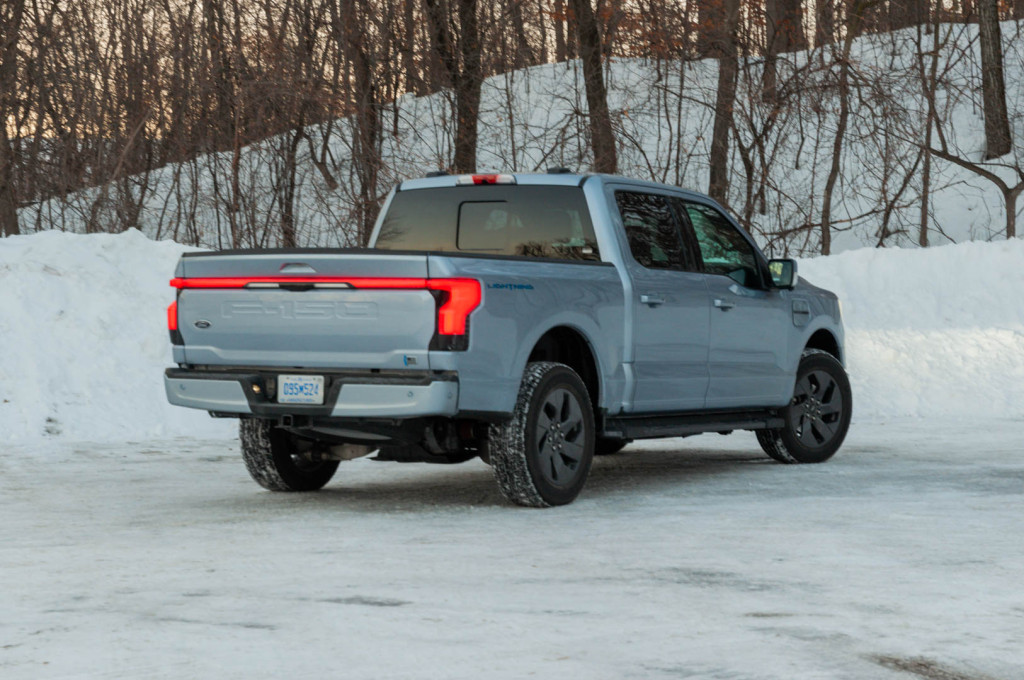
2023 Ford F-150 Lightning
Just like other EVs in the cold
Nearly everything laid out above isn’t unique to Ford’s electric pickup truck. A lot of it could be about a Mustang Mach-E, a Tesla, a Lucid, or a Hyundai Ioniq 5.
Where things are different is the fact the Lightning is a pickup truck that is advertised to do truck things.
Today, big electric pickups are not ideal for towing long distances or taking road trips in cold weather. Both of these facts say more about today’s battery technology and infrastructure than they do about the F-150 Lightning.
Two key differences help put this all in perspective. The first is the fact that a gallon of gasoline is by volume 13 times more energy dense than the best lithium-ion batteries today. However, electric cars are far more efficient at using the energy they do have. The most efficient gas engine in production is at about 40% whereas electric motors operate near 90% efficiency.
The overarching question for truck buyers: Do you honestly need to be able to drive 300 or 400 miles at any time with a moment’s notice? A recent study showed F-150 owners frequently use their trucks to run errands 87% of the time and only frequently tow 7% of the time. Seems for a large swath of consumers buying pickup trucks, if you’re honest with yourself, the F-150 Lightning will be more than adequate for Starbucks runs, soccer practice, and hitting up Home Depot, if there’s time.

